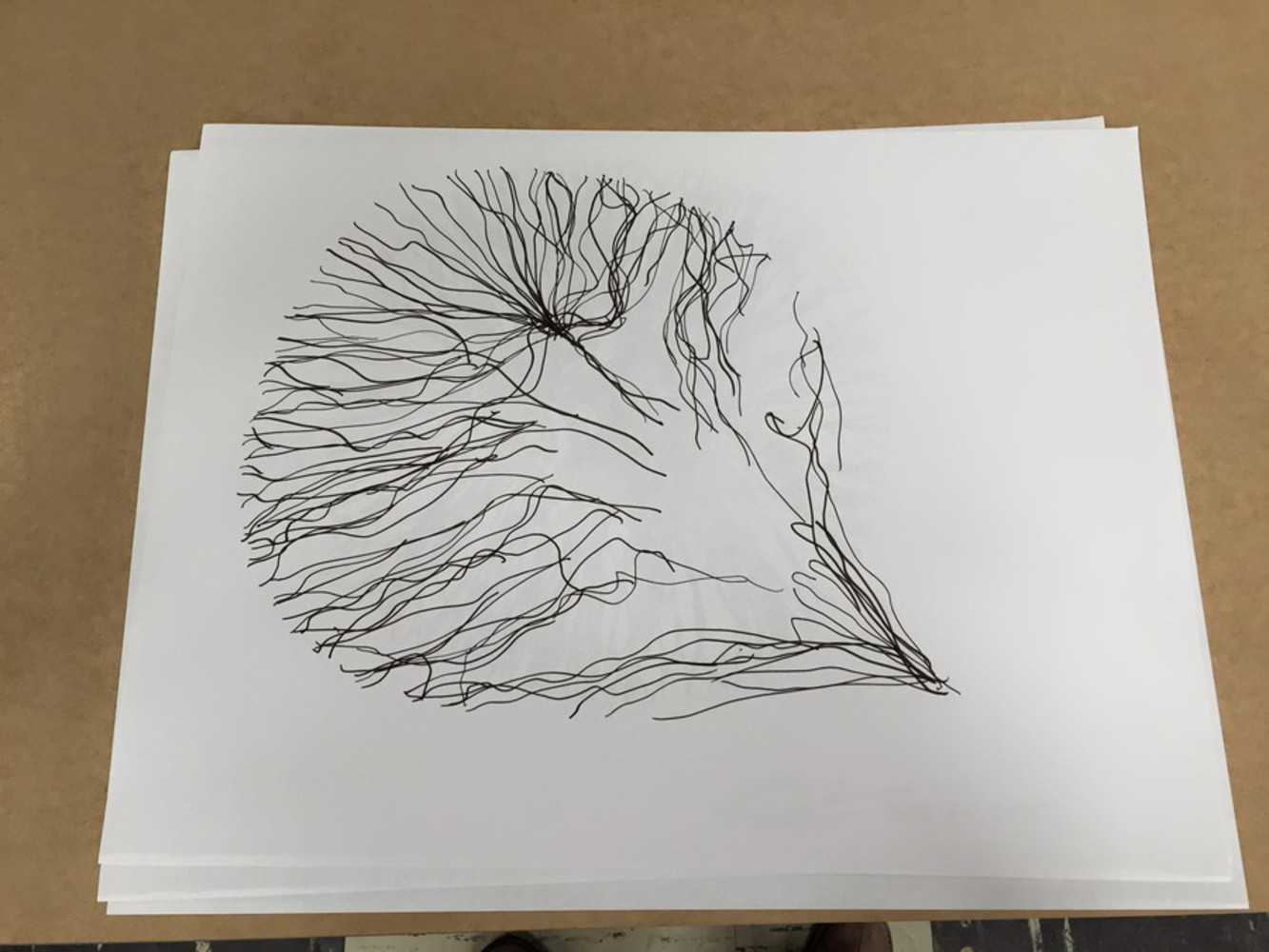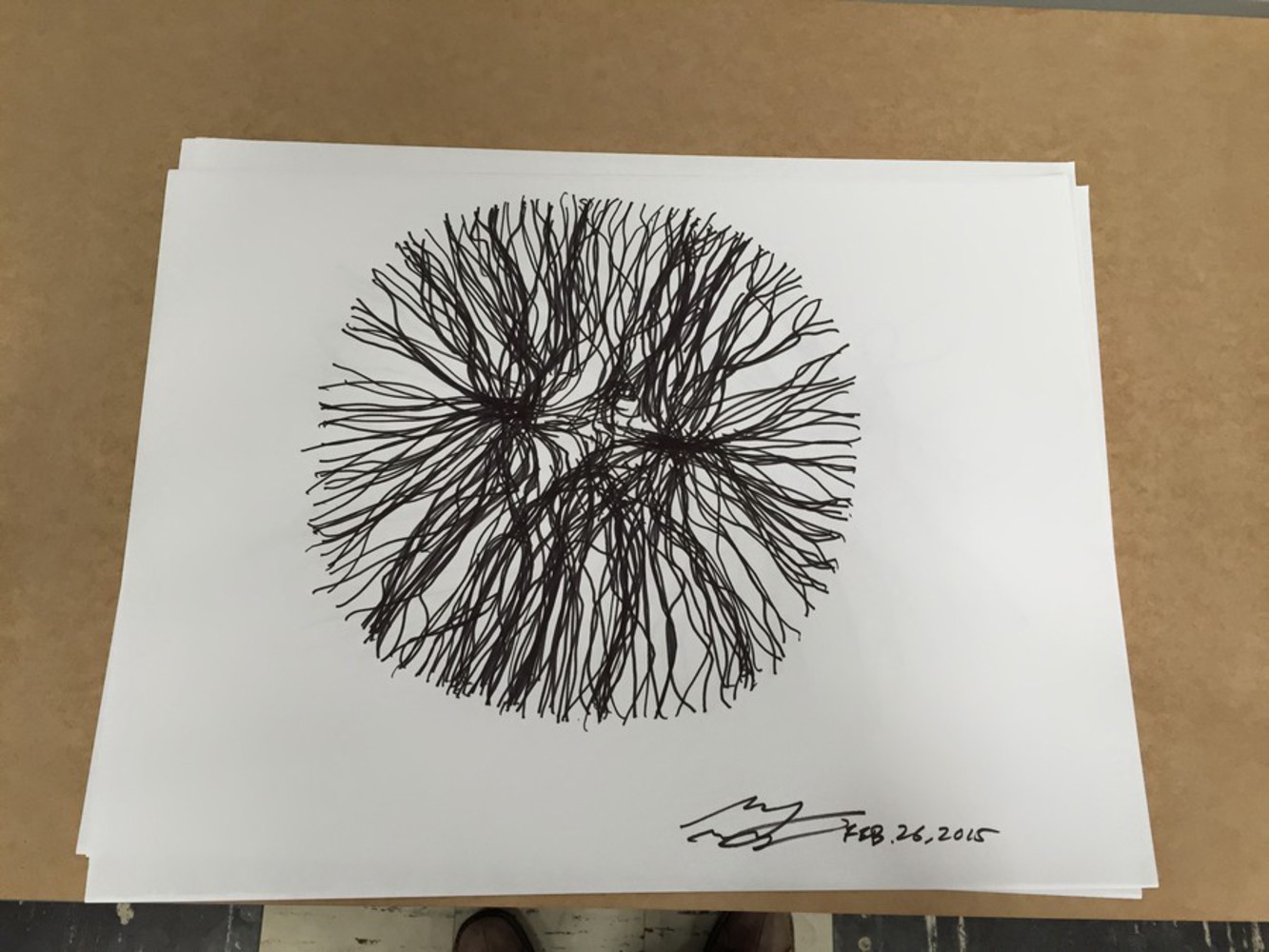In this sketch, agents weave and wrap together to replicated the motions of actual thread. These threads then join at a number of central points. The only limitation given to the artist was to not draw the outlined curve generating the agents, but simply the agents themselves.
With this project, I aimed to simulate the creation of a dream catcher. This involved the simulation of how thread weaves together. That being said, I was able to simulate the movement of thread by applying a number of different agent forces. Agents repel and attract each other at different radii to create a weaving effect, a distinct effect that is seen in many dream catchers.
I believe the outcome of this project somewhat supported the theory. Many people, however, got the impression that this was a simulation river system beginning at a single point and expanding outward (similar to a watershed).
When the drawer is presented with the prompt, they have a number of decisions to make. For example, "Do I trace the agents?", "Do I move from the inside of the shape out, or visa versa?", "When do I stop working on this piece?" These decisions, outlined the result of the the final sketch.
Unfortunately, I think this project didn't take a user's drawing skill into effect as much as I would've hoped. Most people that tried using my sketch ended up tracing the agents, creating a very cool, yet easily repeatable image.
I believe this project failed in it's original intention. Most people didn't align with the idea that the sketch represented a dream catcher, but instead believed I created a way to simulate rivers or neurons. I think this is an interesting result that prompts further investigation.
Sketches below are done by Kevyn McPhail and Brian Yang
Video for Project: http://youtu.be/I0LdJH46i44

